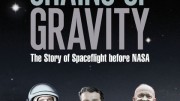A collective memory of Canadians, Hinterland Who’s Who remains a staple of Canadiana, with newly produced versions of the short educational films on television at this very moment.
Andrew Burke, a film professor at the University of Winnipeg, has now taken the time to analyze the shorts and mine them for Canadian identity in his book Hinterland Remixed: Media, Memory, and the Canadian 1970s.
Throughout the book’s five chapters, Burke thoroughly examines Canadian television shows and films from the 1970s to see how these works cemented and perpetuated Canadian mythologies.
Chapter one gives an in-depth look into the complicated history of how Hinterland Who’s Who came into being, including how the 60-second shorts got their name.
The information concerning how the Canadian Wildlife Service — now called the Canadian Wildlife Federation — used the shorts to promote their conservation efforts while masking their self-promotion as educative clips is fascinating.
After the setup of Hinterland Who’s Who as a perpetuation tool of Canadian mythology, the proceeding choices of shows analyzed are as interesting as they are limiting.
Chapter two focusing on Michael Snow’s La Région Centrale is sound, as the film can be argued to be perpetuating the “barren landscape” of Canada into the global imaginative collective.
However, chapter three is an interesting choice which focuses on how Canadian comedy perpetuated Canadian mythologies.
At first glance, focusing on SCTV is a wise choice with the amount of comedic talent on the show as a collection of proof that Canada is a comedic powerhouse.
But on second thought, all Canadian comedy shows seem to perpetuate Canadian mythologies and manifest them in our present day.
Most glaringly, the “Great White North” segment on SCTV barely gets a page of recognition in the book, where a line of impetus from SCTV to the birth of the Red Green Show could be drawn.
It’s chapter four that reads the best. Analyzing the film Death by Popcorn: The Tragedy of the Winnipeg Jets, Burke eloquently connects the modern Winnipeg identity as being hinged on the sale of the Winnipeg Jets, the first iteration of the team having originated in the ’70s.
Burke argues that by creating the narrative National Hockey League commissioner Gary Bettman betrayed the Jets and the city, Winnipeg’s “down-on-our-luck” identity seems to have been created in this moment, linked to the “fortunes of its hockey team.”
At its best, Hinterland Remixed makes the case that Canadian media from the ’70s perpetuated and propelled Canadian mythologies into our present world, including the fact that these mythologies are mainly composed of white imaginings of what Canada is.
At its worst, the book perpetuates what can be referred to as ’90s dissociation — that things held nostalgically for occurring in the 1980s disappeared for kids born in the 1990s.
Where Burke definitively asserts Hinterland Who’s Who largely disappeared from the Canadian television landscape in the mid- to late-’80s, anyone born in the ’90s will dispute the claim, fondly remembering the Canadian shorts while watching Beave and Buckley on the Manitoba Television Network — a frustrating moment of misinformation now canonized and perpetuated in academic literature.
That being said, Hinterland Remixed is a worthwhile read chock-full of information about the manifestation of Canadian nostalgia.
Hinterland Remixed is available at major retailers.



